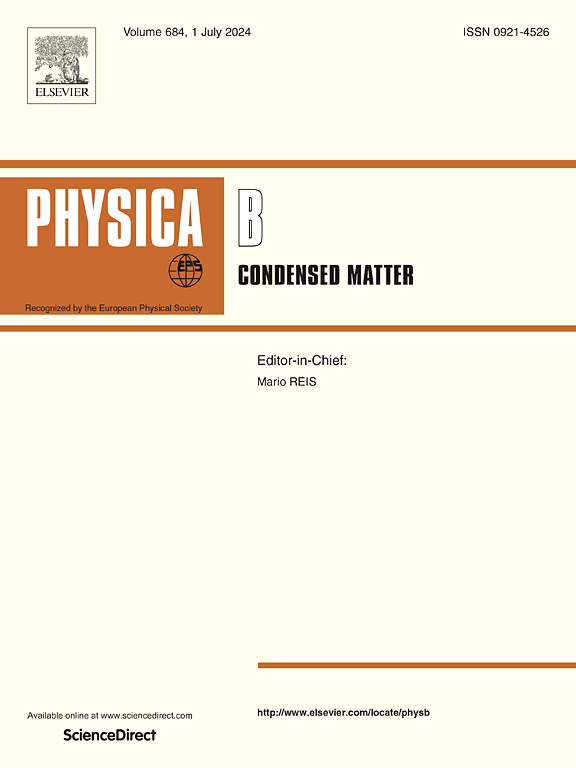Electronic structure engineering of Zr-doped Ti3C2 and Ti3CN MXenes for efficient hydrogen evolution reaction
IF 2.8
3区 物理与天体物理
Q2 PHYSICS, CONDENSED MATTER
引用次数: 0
Abstract
Hydrogen production via the Hydrogen Evolution Reaction (HER) is crucial for sustainable energy, but its reliance on expensive Pt-based catalysts limits scalability. Here, we investigate the catalytic performance of Zr-doped Ti3C2 and Ti3CN MXenes using first-principles density functional theory (DFT). Our results show that Zr doping at 3% and 7% significantly enhances HER activity by reducing the work function to the optimal range of 3.5–4.5 eV and achieving near-zero Gibbs free energy (= 0.18–0.16 eV), ideal for efficient hydrogen adsorption and desorption. Bader charge analysis reveals substantial electron accumulation at Zr and N sites, facilitating charge transfer and improving catalytic performance. These findings establish Zr-doped MXenes as cost-effective, high-performance alternatives to noble metal catalysts, offering a scalable pathway toward green hydrogen production and next-generation electrocatalysts.
zr掺杂Ti3C2和Ti3CN MXenes高效析氢反应的电子结构工程
通过析氢反应(HER)制氢对可持续能源至关重要,但其对昂贵的pt基催化剂的依赖限制了其可扩展性。本文采用第一性原理密度泛函理论(DFT)研究了zr掺杂Ti3C2和Ti3CN MXenes的催化性能。结果表明,3%和7%的Zr掺杂显著提高了HER活性,使功函数降低到3.5-4.5 eV的最佳范围,并实现了接近零的吉布斯自由能(|ΔGH∗|= 0.18-0.16 eV),是高效吸附和解吸氢的理想选择。Bader电荷分析表明,在Zr和N位点有大量的电子积累,促进了电荷转移,提高了催化性能。这些发现表明,zr掺杂MXenes是贵金属催化剂的经济高效替代品,为绿色制氢和下一代电催化剂提供了可扩展的途径。
本文章由计算机程序翻译,如有差异,请以英文原文为准。
求助全文
约1分钟内获得全文
求助全文
来源期刊

Physica B-condensed Matter
物理-物理:凝聚态物理
CiteScore
4.90
自引率
7.10%
发文量
703
审稿时长
44 days
期刊介绍:
Physica B: Condensed Matter comprises all condensed matter and material physics that involve theoretical, computational and experimental work.
Papers should contain further developments and a proper discussion on the physics of experimental or theoretical results in one of the following areas:
-Magnetism
-Materials physics
-Nanostructures and nanomaterials
-Optics and optical materials
-Quantum materials
-Semiconductors
-Strongly correlated systems
-Superconductivity
-Surfaces and interfaces
 求助内容:
求助内容: 应助结果提醒方式:
应助结果提醒方式:


